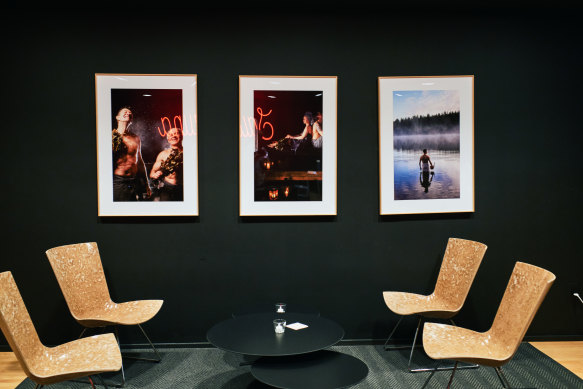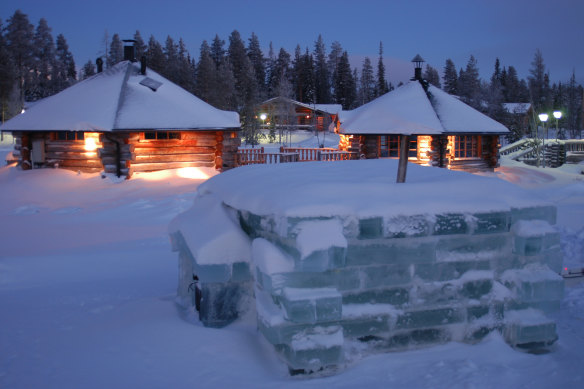‘Networking in the nude is better’: The benefits of sauna diplomacy
By Alyson Krueger
Washington: “When you are half-naked or even sometimes completely naked, it allows for deeper discussion,” said Mikko Hautala, Finland’s ambassador to the United States. “You talk in a way that doesn’t happen when you are sitting around a table with a tie on or at some formal thing.”
Diplomacy takes shape in different ways: formal meetings in the Oval Office and state dinners in the White House’s grand East Room, casual receptions at embassies, and one-on-one meetings over martinis in the lobbies of five-star hotels.

The FInnish government prefers to conduct business in the sauna and, for the most part, in the nude.
And then there is the way the Finnish government prefers to conduct business. They like for their networking and meetings to happen in the sauna and, for the most part, in the nude.
“We have a golden rule that whatever happens in the sauna stays in the sauna,” Hautala said. “We try to make sure there is full trust and confidence.”
In Finland, the sauna is part of everyday life, the ambassador explained. “There are 5.5 million people and 3 million saunas,” he said. “Even a small flat has a sauna.”
The Finns use it multiple times a week in the evenings or mornings before their day begins, in a ritual that involves showering, sitting in extreme heat and cooling off in cold water. That practice, which is traditionally performed without a bathing suit, is repeated several times before sauna goers sit down for a healthy meal. It is a social experience.

The lobby area leading to the sauna at the Finnish Embassy in Washington.Credit: Justin T. Gellerson/The New York Times
Sixteen years ago the Finnish embassy in Washington decided to invite influential people – politicians, diplomats, journalists, civil servants and academics – to experience the sauna together as a means of networking.
The Diplomatic Sauna Society, as the gatherings are now called, is now a coveted invitation in the Beltway, thanks to Finland’s growing influence in international affairs and the desire of busy professionals to live healthier lives.
“There are a lot of people trying to get a ticket, and it is very sought after,” said Robbie Gramer, 33, who writes about diplomacy and national security for Foreign Policy magazine. After he wrote about his experience, “I got a flood of people from the State Department, Pentagon, congressional staffers, other reporters all asking me how I got in and ‘Can you put in a good word for me?’”
Hautala said, “I get inquiries from congressmen or congresswomen to come to the sauna.” The embassy estimated that it fields several requests a week.

Saunas area a part of daily life in Finland.
In Washington, there are two types of Diplomatic Sauna Society events. (Similar set-ups exist in Finnish embassies around the world, including in Berlin and London.) In the first, the Finnish delegation gathers a group of 15 to 20 people at the embassy about once a month. The evening starts in a dark downstairs bar, lit by a neon sign that reads “Sauna”. The attendees are separated by gender, and each group is taken into a fitting room stocked with Marimekko robes and Lumene bathing products.
Participants undress – nudity is encouraged, but bathing suits are allowed – and then go through the sauna ritual: shower, heat, cold, repeat. After a few rounds, everyone changes and heads back into the bar area. Drinks and traditional Finnish snacks are served, including meatballs and salmon on rye bread with dill sauce.
The ambassador also hosts weekly sauna diplomacy sessions at his private residence. His sauna is smaller (it can fit about 10 people), and it’s outside, with a pool to cool off.

The entrance to the sauna at the Finnish embassy in washington. Diplomats are said to be keen to receive an invitation.Credit: Justin T. Gellerson/The New York Times
All attendees receive a diploma that says, “Membership in the Society is awarded only to individuals who have demonstrated extraordinary sisu (grit) by conversing effortlessly and eloquently in the 180-degree Fahrenheit [82 degrees Celsius] heat of the embassy’s diplomatic sauna.”
“I posted a photo of mine on Twitter. It was an honour,” said Marie Royce, who was an assistant secretary of state in the Trump administration.
Gramer, the journalist, said the sauna gatherings were a welcome change from other events in the nation’s capital.
“Embassies in DC always have different events, and oftentimes they are buttoned-up and pretty boring,” he said. “The sauna is different. It’s a lot warmer. It’s a lot more welcoming.”
Ben Cantrell, chief of staff for Senator Markwayne Mullin, of Oklahoma, said he appreciated the ability to network while doing something healthy.
“I am not one to shy away from having a tough meeting on the tennis court or the golf course, and this felt more aligned to that,” he said.
He didn’t even mind dedicating six hours of a Friday night to it.
Walter Landgraf, senior fellow of the Eurasia Program at the Foreign Policy Research Institute in Philadelphia, said he would cherish an invitation to the sauna.
“I think the atmosphere, the ritual of doing the sauna and sharing that experience with another person promotes an openness, and it really lets people lower their guard,” Landgraf said. “It’s also private. You are behind closed doors; people are more inclined to talk.”
Indeed, Hautala said that one of the most valuable parts of sauna meetings is that they last significantly longer than regular business meetings: “I am not going to mention names, but I spent five, six hours with the editor of a key national media company, and that doesn’t happen.”
It also helps that there is a particular interest in Finland now that the country has joined NATO in the wake of Russia’s invasion of Ukraine.
“If you want to understand how Putin’s power centres work, if you can’t talk to the Russians, which often you can’t, the next stop is the Finns,” Gramer said. (Finland has a border with Russia that is about 1300 kilometres long.)
Max Bergmann, director of the Europe, Russia and Eurasia program at the Centre for Strategic and International Studies, said it was also in Finland’s interest to cultivate close relationships in the United States.
“People who attend a sauna get this memorable experience, and they will remember the Finns who hosted them, and the next time the Finns ask for a meeting, they will get one,” he said.
Gramer agreed that the set-up was win-win: “I never thought I would say this, but networking in the nude is just better.”
This article originally appeared in The New York Times.